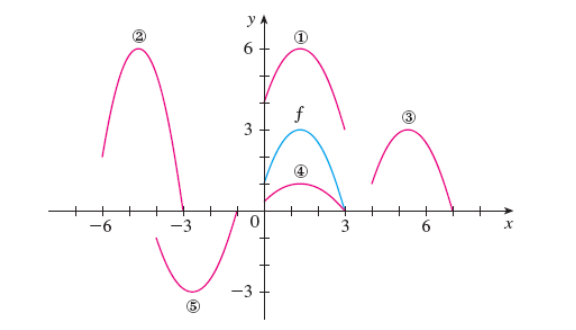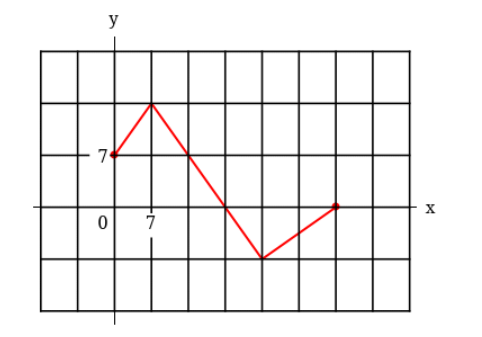Navigation » List of Schools, Subjects, and Courses » Math 261 – Calculus I » Homeworks » Section 1.3 Homework
With Answers Good news! We are showing you only an excerpt of our suggested answer to this question. Should you need our help in customizing an answer to this question, feel free to send us an email at  or chat with our customer service representative.
or chat with our customer service representative.
Section 1.3 Homework
Section 1.3 Homework
1. Suppose the graph of f is given. Write equations for the graphs that are obtained from the graph of f as follows.
a. Shift 6 units upward.
b. Shift 6 units downward.
c. Shift 6 units to the right.
d. Shift 6 units to the left.
e. Reflect about the x-axis.
f. Reflect about the y-axis.
g. Stretch vertically by a factor of 6.
h. Shrink vertically by a factor of 6.
2. Explain how each graph is obtained from the graph of y = f(x).
a. y = f(x) + 2
b. y = f(x + 2)
c. y = 2f(x)
d. y = f(2x)
e. y = −f(x) − 1
f.
3. The graph of y = f(x) is given. Match each equation with its graph.

4. The graph of f is given. Use it to graph the following functions.

a. y = f(2x)
b.
c. y = f(−x)
d. y = −f(−x)
5. Graph the function by hand, not by plotting points, but by starting with the graph of one of the standard functions given in Section 1.2, and then applying the appropriate transformations.
a.
6. Graph the function by hand, not by plotting points, but by starting with the graph of one of the standard functions given in Section 1.2, and then applying the appropriate transformations.
7. Graph the function by hand, not by plotting points, but by starting with the graph of one of the standard functions given in Section 1.2, and then applying the appropriate transformations.
8. Graph the function by hand, not by plotting points, but by starting with the graph of one of the standard functions given in Section 1.2, and then applying the appropriate transformations.
9. Graph the function by hand, not by plotting points, but by starting with the graph of one of the standard functions given in Section 1.2, and then applying the appropriate transformations.
10. Graph the function by hand, not by plotting points, but by starting with the graph of one of the standard functions given in Section 1.2, and then applying the appropriate transformations.
11. Find each of the following functions and state their domains. (Enter the domains in interval notation.)
a. f+g
f+g =
domain
b. f-g
f-g
domain
c. fg
fg =
domain
d. f/g
f/g
domain
12. Find each of the following functions.
a. f+g
State the domain of the function. (Enter your answer using interval notation.)
b. f-g
State the domain of the function. (Enter your answer using interval notation.)
c. fg
State the domain of the function. (Enter your answer using interval notation.)
d. f/g
State the domain of the function. (Enter your answer using interval notation.)
13. Find the functions and their domains. (Enter the domains in interval notation.)
a. f o g
(f o g)(x)
domain
b. g o f
(g o f)(x)
domain
c. f o f
(f o f)(x)
domain
d. g o g
(g o g)(x)
domain
14. Find the functions and their domains. (Enter the domains in interval notation.)
a. f o g
(f o g)(x)
b. g o f
(g o f)(x)
domain
c. f o f
(f o f)(x)
domain
d. g o g
(g o g)(x)
domain

